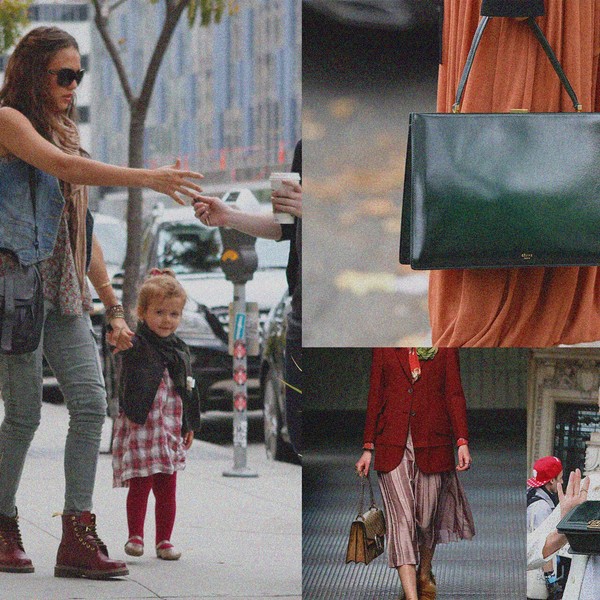
During a recent nostalgic flip through my 6th grade yearbook, it dawned on me that dragons were a ubiquitous part of my Y2K childhood. We were raised on Dragon Tales, Eragon and the Harry Potter series, so naturally I grew to love the extensive mythology and celestial grandeur around these mythical creatures. The prevalence of dragons extended to fashion, as well; you couldn’t walk into a mall without seeing a pair of JNCO jeans plastered with an undulating embroidered dragon, or a dragon-emblazoned Ed Hardy tee in the designated mall-dad area. Fashion designers and mass mall brands alike drew inspiration from traditional Chinese and Japanese depictions of the dragon, which became a reigning motif of everyday Y2K fashion—it wasn’t solely reserved for the realm of celebrity. The dragon hit peak prominence in the 2000s and gradually faded away along with frosted tips and mp3 players. But now, a perfect storm is waking the slumbering Y2K dragon.
Lunar New Year, celebrated by Chinese and other Asian cultures, starts on February 10. Each year is assigned one of the 12 animals from the Chinese zodiac and 2024 marks the Year of the Dragon—a symbol of good luck, strength and imperial authority in Chinese folklore. Combine that with the ongoing Y2K fashion fervor and House of the Dragon Season Two premiering this summer, and it’s a powerful confluence of cultural moments that will catapult the dragon into the top animal motif of 2024.
The 12-year cycle of Lunar New Year means that if we turn the clock back to 2000, that was also the Year of the Dragon. It was the motif of the new millennium. The expansion of Chinese global trade with Western countries at the time led to a broader exchange within pop culture. Fashion designer Daisy Wang of DAWANG grew up in China during the early 2000s and recounts that “the celebration of entering a new millennium and a dragon year made the dragon motif such a common use in every fashion scenario at the time.” Applying the 20-year fashion trend cycle math, 2024 is the first Year of the Dragon within 20 years of 2000. How auspicious.
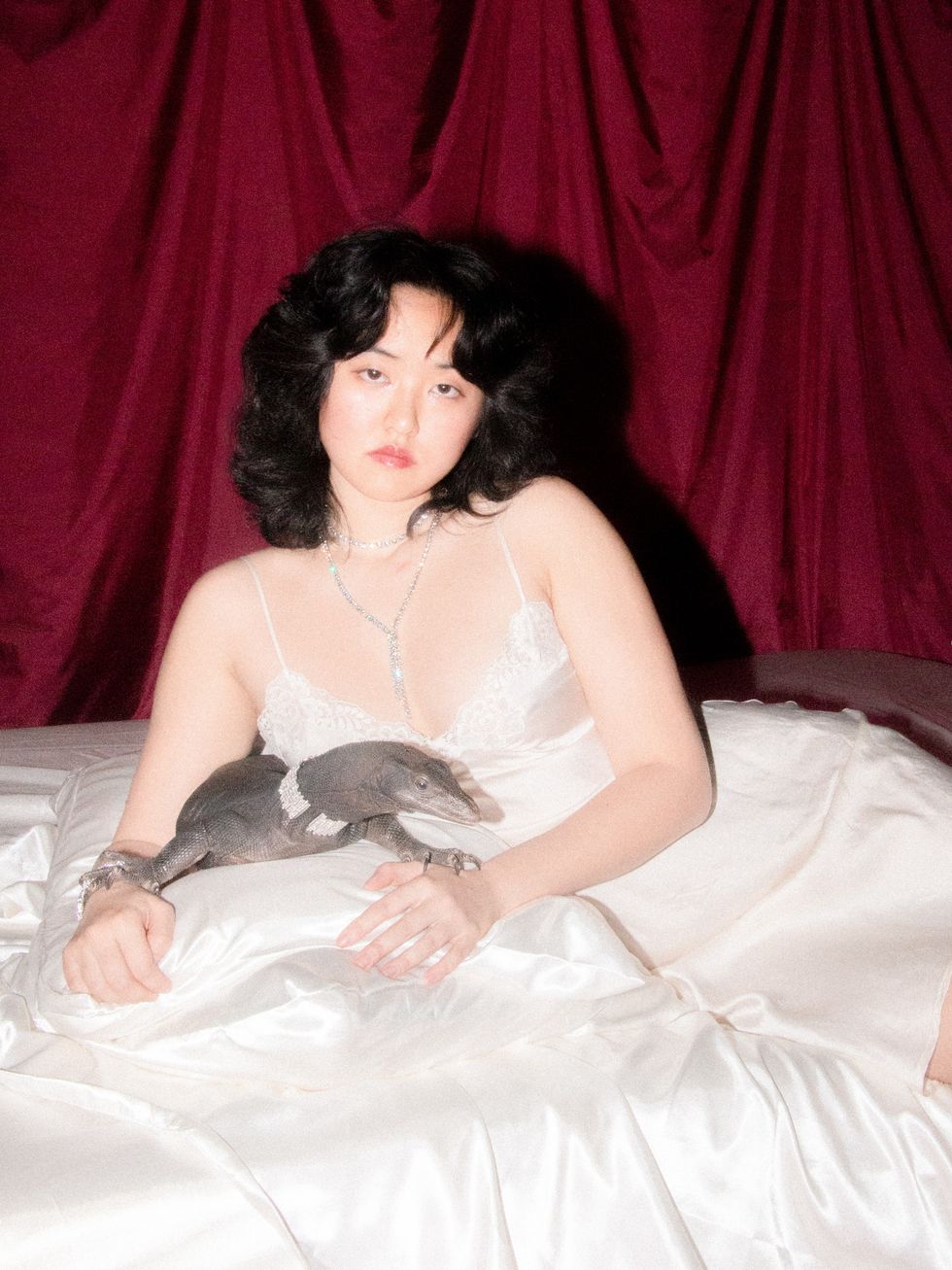
Cuff: Suzanne Kalan; Necklace: Rahaminov
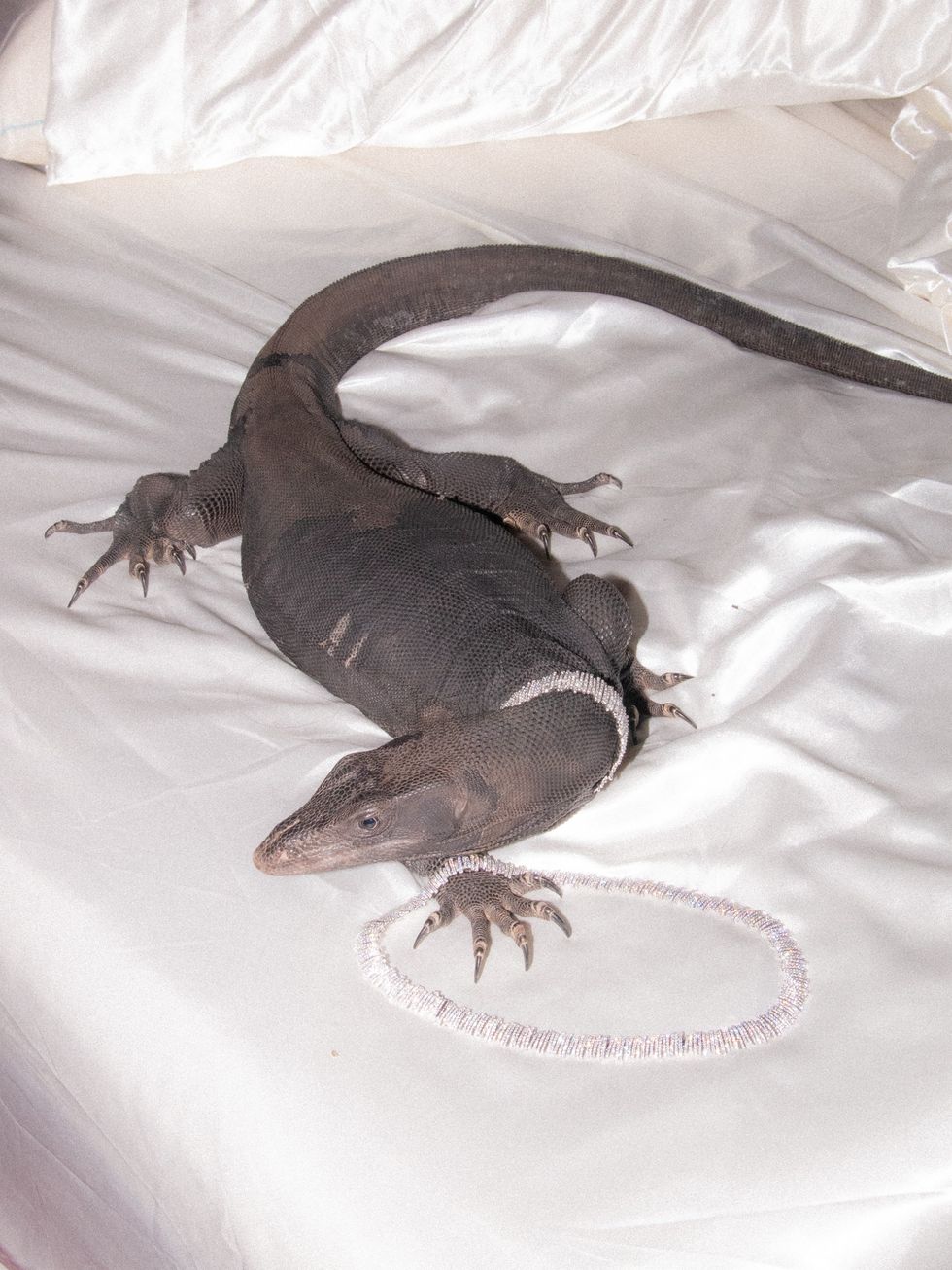
Cuff and Tennis Necklace: Suzanne Kalan
Lunar New Year is becoming an increasingly significant retail calendar event on a global scale. As the Asian luxury market continues to grow rapidly, we see more brands releasing special collections inspired by the zodiac animal of the year. In 2023, the Year of the Rabbit spawned countless rabbit-themed designer collections from brands like Dior, Miu Miu and Mulberry—which laid the groundwork for Miffy-mania. Luxury brands started releasing Year of the Dragon collections as early as December 2023, with a steady trickle of campaigns going live throughout January. While nearly all luxury brands center their collections around dragon-branded signature products, the artistic depiction of the dragon motif varies widely.
The result is a sartorial sampler platter of dragons ranging from traditional and literal to abstract and cartoonish. Even within the same collection—Tory Burch’s for example—you’ll see stylistic variance between an adorable dragon mini bag that’s effectively a stuffed animal, complete with little leather strips as a mustache and a classic Tory crossbody with a subtle pavé crystal dragon intertwined on the logo clasp. For a more conceptual approach to the dragon motif, look to Bottega Veneta. Their signature Intrecciato bags are enhanced with playful references to dragon scales within the woven patterns (my personal favorite is the Jodie, which has a little “dragon tail” handle). A hand-drawn dragon reminiscent of a child’s crayon sketch adorns ready-to-wear knits and outwear in Marni’s collection, matching the brand’s playful spirit.
One notable trend, however, is that brands are collaborating with Chinese artists to create custom dragon-themed artwork for their collections. Coach and BOSS contracted artists Lian Yang and Feng Tang, respectively, to incorporate depictions of dragons aligned with traditional Chinese art styles. Yang combined ancient and contemporary techniques to create her illustration for Coach—an ethereal Chinese dragon with gold foil accents. Similarly, Tang’s dragon artwork for BOSS was inspired by the fluid lines of traditional Chinese calligraphy. Brands utilizing this approach are hoping to highlight the cultural authenticity and storytelling of their collections.
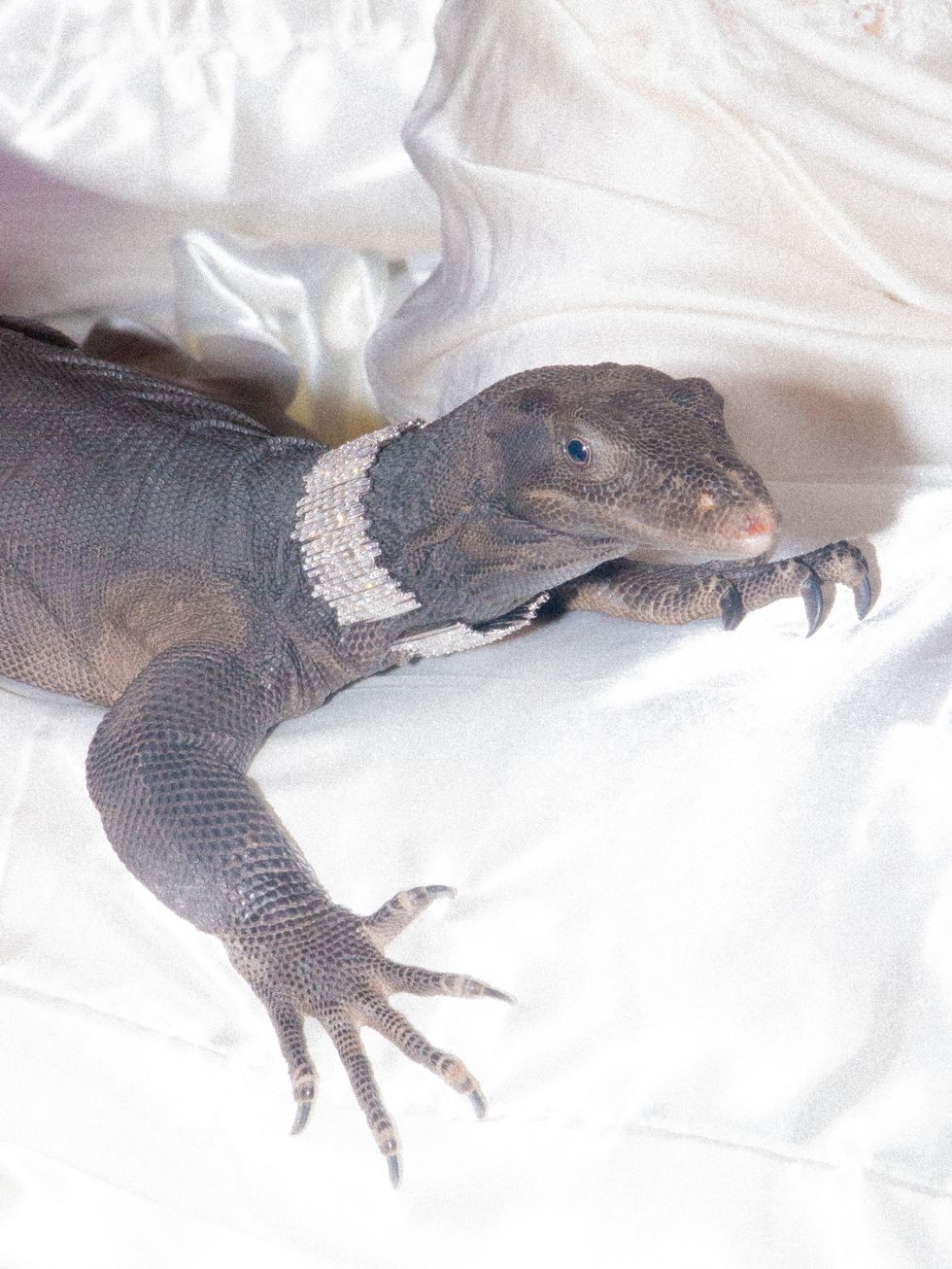
Cuff: Suzanne Kalan
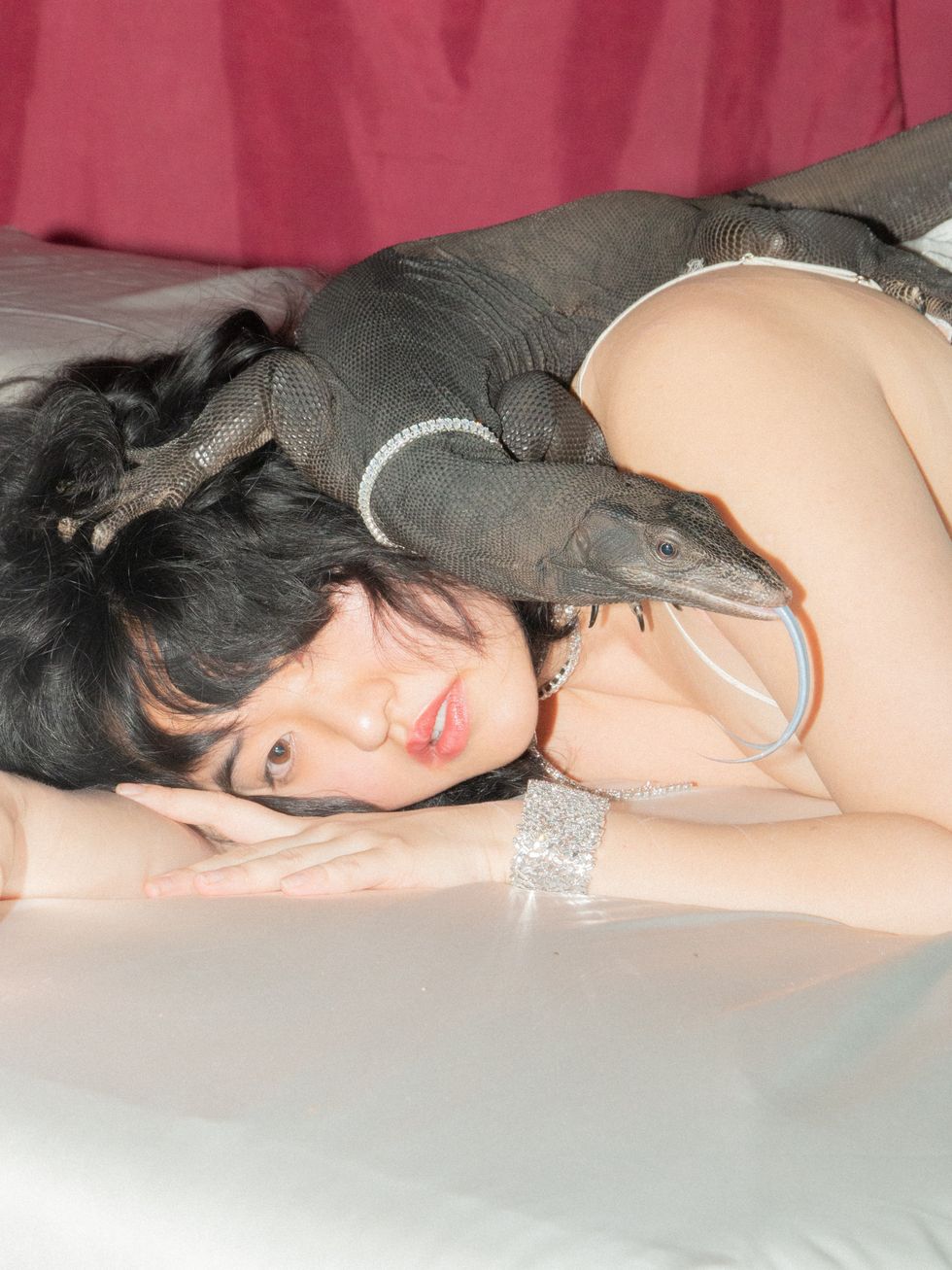
Cuff: Suzanne Kalan; Necklace: Rahaminov
Then there’s the nostalgic cartoon route. Just as Miffy was the unofficial cartoon ambassador for the Year of the Rabbit in 2023, dragon-type cartoon Pokémon are gracing Fendi’s signature jacquard logo bags for the Fendi x Frgmt x Pokémon Lunar New Year collection. This collection directly taps into the nostalgia among Pokémon fans, many of whom likely experienced the 1999-2000 era of Pokémania.
There’s a marked shift in how the fashion community is engaging with Chinese and Asian-inspired imagery through these Lunar New Year collections. During the 90s and 2000s, Y2K dragon motifs were linked to a broader chinoiserie trend in fashion that often perpetuated harmful Orientalist tropes. London-based Creative Director and TikTok creator Sarah Hiraki recalls that she was “acutely aware of how popular Asian-inspired symbolism, like dragons, chopsticks, and cherry blossoms, were in the mainstream media. I saw everyone from Kate Moss to Lizzie McGuire wearing chinoiserie-inspired motifs, and this of course coincided with an upswing in the popularity of other Asian imports, like anime, food, and music.”
Hiraki, who identifies as a person of mixed heritage, elaborates: “the fashion trends of the time never felt like they were by or for Asian people; they had a distinctly white audience. The example of this that sticks in my mind is an old Delia*s catalog [...] where a clearly Chinese-inspired dragon top and skirt was labeled the ‘sushi’ set. It was always abundantly clear that these fashion statements were incredibly shallow, and homogenizing of Asian culture and the Asian-American experience.”
So what’s different in how fashion brands are treating the dragon motif now?
In these 2024 Lunar New Year collections, we see brands intentionally collaborating with Chinese and Asian artists, photographers, and models to prioritize their storytelling perspectives. From the copywriting to the art, these campaigns emphasize the cultural significance of the dragon.
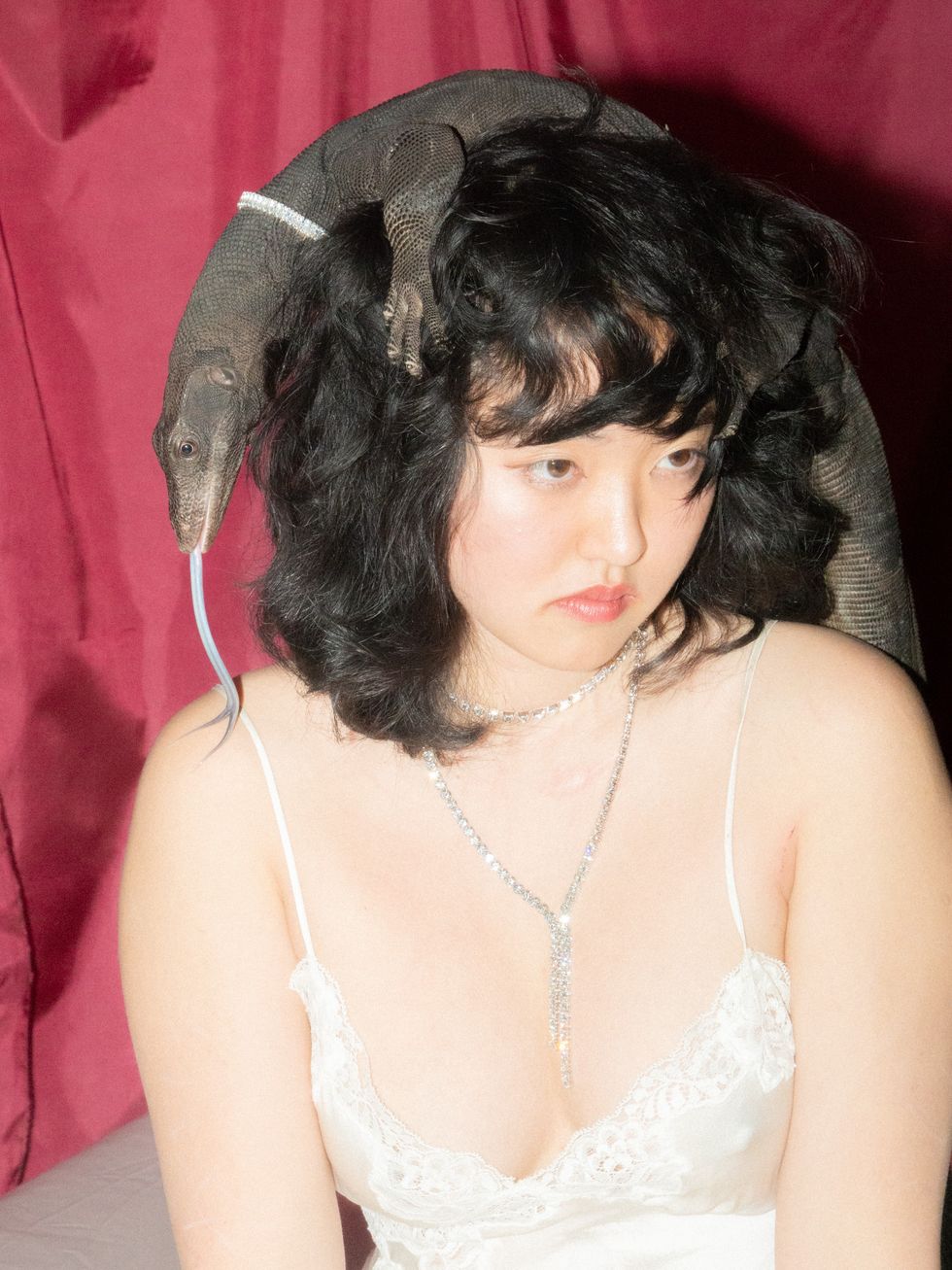
Necklace: Rahaminov

Necklace: Rahaminov
Hiraki expresses her excitement about these collections: “I actually look forward to seeing brands release collections for Lunar New Year, especially when they're working with Asian artists and designers. I hope that brands are listening as much as they're broadcasting, and going beyond just red, gold, and dragons, to tell a story about how we embrace and celebrate our traditions in our communities. Chinese dragons look badass, and I think people from all backgrounds will continue to gravitate toward them as a motif, much in the same way that they did in the 2000's.” She believes that as our mainstream culture became more aware of cultural appropriation in the 2010s, we saw a shift away from caricaturization of Asian-inspired motifs. “While Orientalist fashion certainly hasn't disappeared, I think most people are more aware of the choices they're making when putting on something that's tied to cultural expression,” Hiraki concludes.
In comparison to the 2000s, Wang feels that brands still apply the same design template by “adding a dragon motif to a mass market (safe) product” rather than branching out to “test more unique products.” Looking at this year’s luxury brand collections, it’s true that most showcase handbags and ready-to-wear that are core to the brand—with a dragon on them. However, Wang draws the distinction that now “there’s more respect and support” shown towards Asian artists from the luxury brand community. She predicts that fashion’s love for the dragon will return, and encourages Asian creatives to “tell more stories behind the dragon motif and the meanings behind it.”
Outside of the luxury brand sphere, vintage and archive enthusiasts are also bringing back the Y2K dragon. Vivienne Tam archive collector Amanda Walujono explains that dragons are among the Chinese-American designer’s most popular “China Chic” motifs: “they were prominently featured in numerous collections, but especially the S/S 2000 runway collections.”
Want more stories like this?

